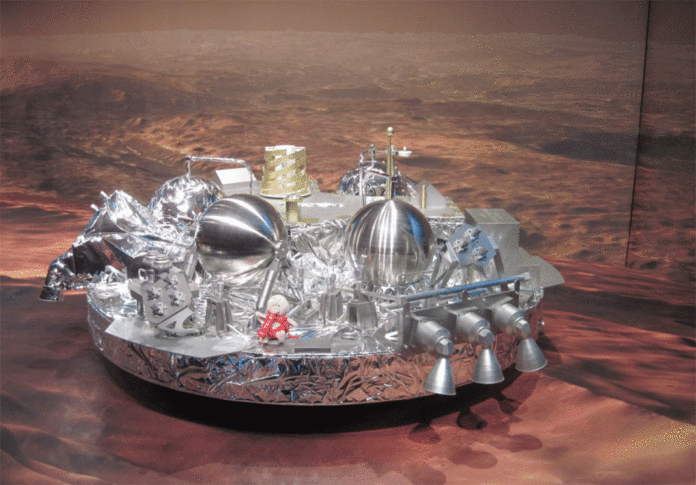
With support and guidance from NASA (National Aeronautics and Space Administration), the ESA (European Space Agency) has finally relocated their failed lander, Schiaparelli.
NASA had recently launched their Mars Reconnaissance Orbiter, a Mars-based satellite that is equipped with several cameras. Its sole mission is to capture image(s) of the Schiaparelli landing site. After a few short weeks, the mission was a success.

The scientists that have studied these images suggested that the white dot we see is the parachute, and the back shield that had been jettisoned is a distance from the lander. The larger aspect in the image is said to be a “bigger than expected” impact site of the respective lander. The Schiaparelli lander had essentially fell a bit longer than what was originally anticipated.
Yesterday, ESA was aiming to be the second company to operate a robot on the surface of Mars. However, obviously, the operation didn’t go as planned. ESA’s lander, Schiaparelli rover, is still on the surface of the red planet, however, all signs are pointing to a hard landing and an extremely expensive broken robot.
There is light to be shined on this topic. The Schiaparelli was just one part of the ESA’s ExoMars expedition. Schiaparelli was simply a dummy, or experimental lander for the mission. It was accompanied by an orbiter that has been dubbed the Trace Gas Orbiter. The TGO has been successfully placed into a Martian orbit and is reported to be functioning at 100%.
. @NASA Mars Reconnaissance Orbiter has imaged changes on #Mars surface linked
to #ExoMars @ESA_EDM https://t.co/QN4BqV7xIR pic.twitter.com/BD7XKhB1oO— ESA (@esa) October 21, 2016
With the TGO operating at 100%, the ESA now has two fully functional orbiting satellites that rotate around Mars. These satellites provide useful information for the scientists.
While the Schiaparelli was a big disaster for ESA, the engineers was able to extract some data from the spacecraft while it descended. This information can now be analysed, to further develop other Schiaparelli-like spacecraft in the near ESA future.
While it still remains unclear as to what caused the issue, ESA is examining the evidence they have. Some of the early analysis‘ show a problem arising in the Schiaparelli’s last moments. The issue happened around the time it was supposed to abandon its parachute and heat shield, as well as when it was supposed to fire its thrusters before landing on Mars.
Schiaparelli was able to achieve a good part of the deceleration by simply just entering the atmosphere of Mars. In this phase, the lander was protected by the landers pre-built heat shields. Shortly after entering the atmosphere, the lander was to deploy a rather large parachute to assist in the deceleration. This stage was also a complete success.
Once the lander reached approximately 7km from the surface, the front heat shield was supposed to deploy and separate from the lander. After that phase, the lander was then supposed to jettison the parachute and the remainder of the heat shields. This is when the Schiaparelli started having issues.
ESA stated in a press release that the ejection phase seemed to have happened too early.
“The data have been partially analysed and confirm that the entry and descent stages occurred as expected, with events diverging from what was expected after the ejection of the back heat shield and parachute. This ejection itself appears to have occurred earlier than expected, but analysis is not yet complete.”
They also said “the thrusters were confirmed to have been briefly activated, although it seems likely that they switched off sooner than expected.”
Sources: NASA, ESA, NASA (Mars Reconnaissance Orbiter), ESA (Trace Gas Orbiter), ESA (Schiaparelli Descent Data).
This article (Failed Worker, Working Orbiter – The ExoMars Mission) is a free and open source. You have permission to republish this article under a Creative Commons license with attribution to the author and AnonHQ.





SUCH an exciting story! Oh, and, by the wall, the fake Mars background’s wallpaper is coming apart at the SEAMS. Nice try… NEXT?
NASA had recently launched their Mars Reconnaissance Orbiter, a Mars-based satellite that is equipped with several cameras. Its sole mission is to capture image(s) of the Schiaparelli landing site. After a few short weeks, the mission was a success.
This entire paragraph is wrong.
MRO has nothing to do with Schiparelli.
It was launched years ago and has been orbiting Mars taking pictures of Mars.
Nasa graciously imaged the site for ESA.